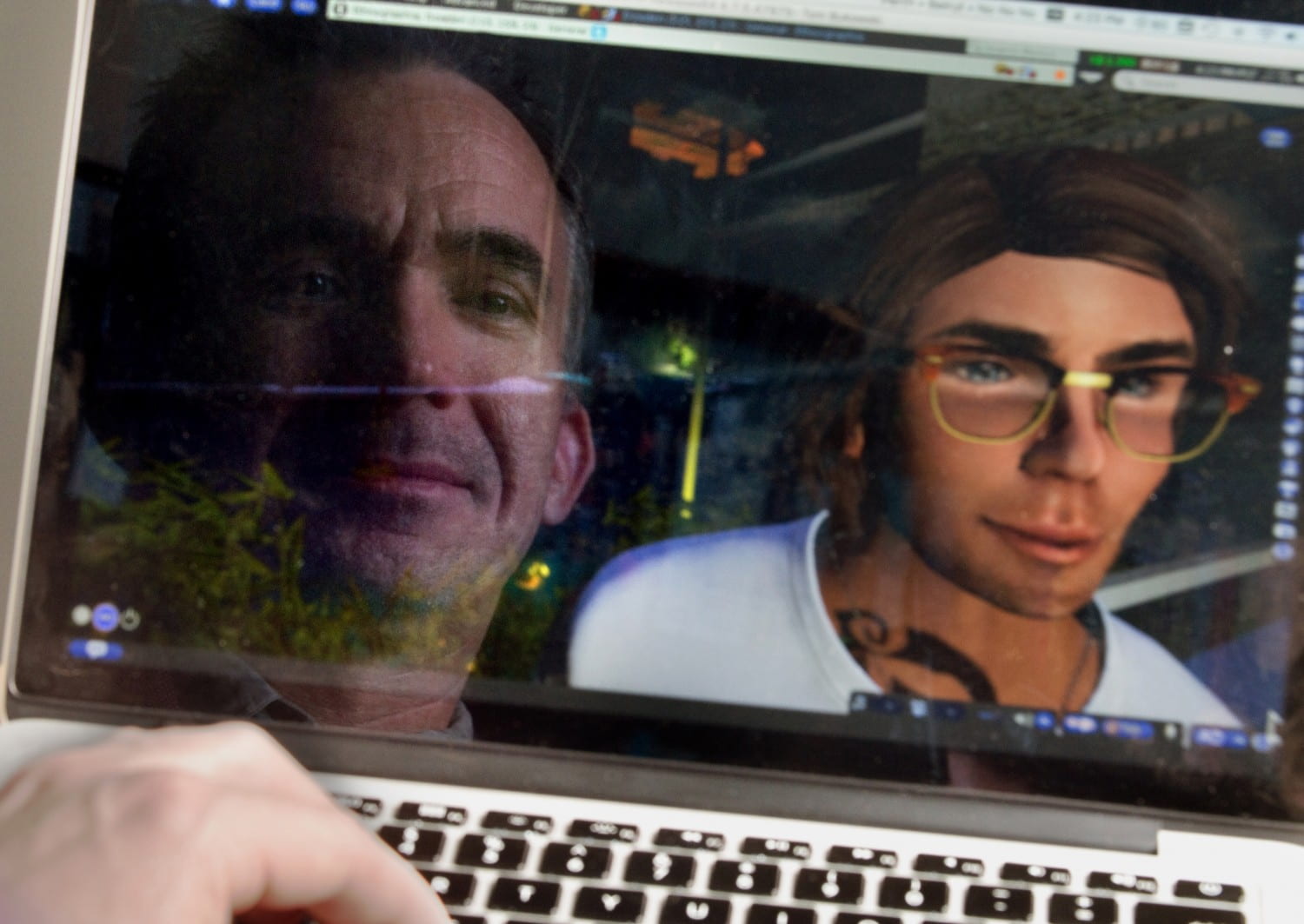A (virtual) world without Parkinson’s
UCI anthropologist explores how people with disabilities make use of online environments

Fran entered the Phantom of the Opera Masquerade Ball dressed to the nines. Her blue gown swayed with her effortless movements; her necklace glittered when it caught the light. She danced, song after song, never stumbling or faltering in her rhythm. It was a great evening, all occurring in the virtual world Second Life, where Fran often spends time with her friends.
When the 88-year-old gets up from her computer, she may have trouble standing. Her Parkinson’s disease makes it a struggle some days to lift her legs enough to walk. But in Second Life, she dances, rides horses and walks on the beach.
“To say Fran’s experience isn’t happening in the real world is false,” says Tom Boellstorff, an anthropology professor at the University of California, Irvine and the author of Coming of Age in Second Life, now in its second edition. “Virtual worlds are online places of culture that impact life in the physical world. Online and offline can both be real. Many of Fran’s encounters in Second Life are very authentic and similar to what many persons with disabilities find when they gravitate toward virtual worlds for social interaction and creative outlets.”
Boellstorff works closely with Fran and others as part of a newly funded $276,900 National Science Foundation study that began in July and will run through June 2018. He conducts interviews – in both the virtual world and the physical world – to better understand how online environments affect social interaction and self-understanding as well as physical-world experiences of disability. He also hopes to learn which aspects of online social interaction are linked to specific disabilities and how differing platforms and devices are utilized.
“Billions of people now participate in online environments – social networking sites like Facebook, games, virtual worlds,” Boellstorff says. “Since some early human first picked up a stick to use as a cane, persons with disabilities have been at the forefront of technology innovation, so it’s natural that they would be doing creative things in virtual worlds too.”
Second Life is one such place where they’re innovating. Now 12 years old, the online virtual world has about 1 million active users overall. Boellstorff was one of the early adopters.
As Tom Bukowski in Second Life, he started running into people with disabilities early on – people like DB, an architect who before being diagnosed with Parkinson’s in the early 2000s, collaborated on the design of Los Angeles’ Walt Disney Concert Hall. When DB’s disease made it too difficult for him to continue working in the physical world, he used Second Life as his creative outlet, designing structures that would be impossible to build otherwise.
Boellstorff also met Solas, a clothing designer whose Parkinson’s complications took her out of the fashion industry. In Second Life, her designs were revived in ways she never could have imagined in the physical world. She’s now well-known on the virtual platform, creating sought-after fashion for avatars. The online community helped her overcome the isolation that persons with disabilities commonly experience and gave her a creative, productive outlet.
“Solas made a comment one day: ‘I feel more comfortable in Second Life because people don’t see me shaking. … I don’t have Parkinson’s in Second Life, and that makes me so happy.’ This view isn’t limited to her experience; it’s echoed by many with disabilities whom I’ve encountered in these worlds,” Boellstorff says.
In some instances, people with disabilities have reported positive changes in their physical world after their time in a virtual space. Fran is among this group, claiming that Second Life has improved her mobility. While Boellstorff isn’t a medical doctor and isn’t studying this aspect, he thinks it’s very interesting and could be the subject of future research.
“Disability is a fascinating category of human experience because anyone can enter it at any moment – we’re all just a car accident away. And even if we avoid it, if we live long enough, age will present us with obstacles that limit our ability to function as we currently do,” he says.
“Studying how people adapt through the use of technology helps advance the public conversation on disability and digital technology.”